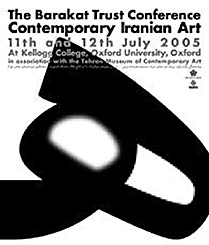Hengameh Fouladvand

Presented at the conference: Contemporary Iranian Art: Modernity and the Iranian Artist, at Kellogg College, University of Oxford in association with Tehran Museum of Contemporary Art, July 2005
Spiritual, historical and mythological subjects inform Yari Ostovany’s sophisticated compositions. His intellectually ambitious use of postmodern texts and theory reflects his familiarity with old-master paintings and classical art. His work questions the concepts of authenticity and pushes the limits of rationality; Ostovany’s work show a distinct interest in poetry, literary works, the development of ‘self’ and new forms of spirituality. Modifying the customary notions of perception and representation, his work negates these required attributes. He examines how the new languages of advanced technological systems come to challenge old categories in art history, such as a classical torso or a still life. Ostovany’s torsos become commentaries on the knowledge about classical artworks that belong to the patrimony of Western culture.
In ‘Simulation’ series seeing an image is no longer the only valid basis for believing. For Ostovany, the purpose becomes to cultivate new identities. Violins become something else and multiple instruments become the norm to picture the ‘other’. He offers the viewer alternative journeys into the realm of the postmodern where he is equipped with a wide variety of technologies, techniques and materials with which to represent images and texts. At first glance many of his works may seem to be indulging grand narratives. On closer inspection, however, in-depth keys to personal concepts engrained in complex visual narratives are offered, one by one. There is a discreet energy in Ostovany’s work, which is mesmerized by spiritual and intellectual journeys, and has lead to his postmodern multidirectional undertakings. These works divulge a sophisticated person reluctant to create a signature style and clever not to propose a universal message.
– Published in the book Amidst Shadow and Light: Contemporary Iranian Art and Artists edited by Hamid Keshmirshekan